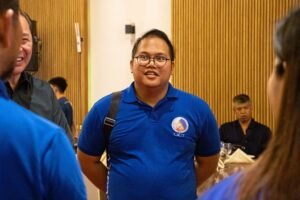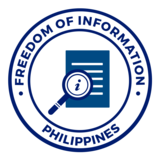Department of the Interior and Local Government (DILG) Region 8 Director Arnel M. Agabe participated in the Grand Launch of the National Fiber Backbone (NFB) Phases 2 and 3 on July 7, 2025 in Palo, Leyte, joining President Ferdinand Marcos Jr., House Speaker Martin Romualdez, and other dignitaries in celebrating a major stride in the country’s digital infrastructure system.
In his address, President Marcos Jr. acknowledged the inequitable access to internet experienced by Filipinos, especially those residing in far-flung areas. He described the National Fiber Backbone as a bridge that connects Filipinos to sources of information and services regardless of their location.
“Mga kababayan, ang pinapasinayaan natin ngayong Phase 2 at Phase 3 ng National Fiber Backbone ay tulay ng impormasyon at ng serbisyo mula sa hindi lamang sa pamahalaan, kundi sa ating mga gusali, sa ating mga kababayan.”
In a statement, Regional Director Agabe underscored how expanded connectivity will enhance local service delivery in Eastern Visayas. He noted that a robust backbone network is essential for real‑time coordination among local government officials and frontline agencies. “Bringing fast, reliable internet closer to every community strengthens our LGUs’ capacity to serve,” he said.
Local officials across Eastern Visayas expressed their support for the NFB. Eastern Samar Governor Ralph Vincent Evardone welcomed the NFB’s potential to bring government services closer to the people and empower small, internet-reliant industries such as e-commerce. Meanwhile, Palo Mayor Remedios Petilla expects the project to attract more tech startups in the region.
Phases 2 and 3 will add 100 gigabits per second (Gbps) of bandwidth through 31 new nodes operated by the National Grid Corporation of the Philippines (NGCP), extending coverage to at least 20 provinces, some 1,000 government agencies, and an estimated 1.39 million users. These stretches will link Cagayan Valley and CALABARZON, traverse the Bicol Region and Eastern Visayas, and lay groundwork for future Mindanao connections.
The NFB project, led by the Department of Information and Communications Technology (DICT), follows the successful rollout of Phase 1 in 2024—a 1,245 km network from Laoag City to Quezon City. The DICT aims to fully interconnect the archipelago by 2028 through subsequent NFB phases, its Middle Mile Network, and last‑mile programs.
By bringing high‑speed internet closer to underserved areas, the NFB paves the way for stronger governance and more equitable public services enjoyed by every Filipino regardless of their location.


















